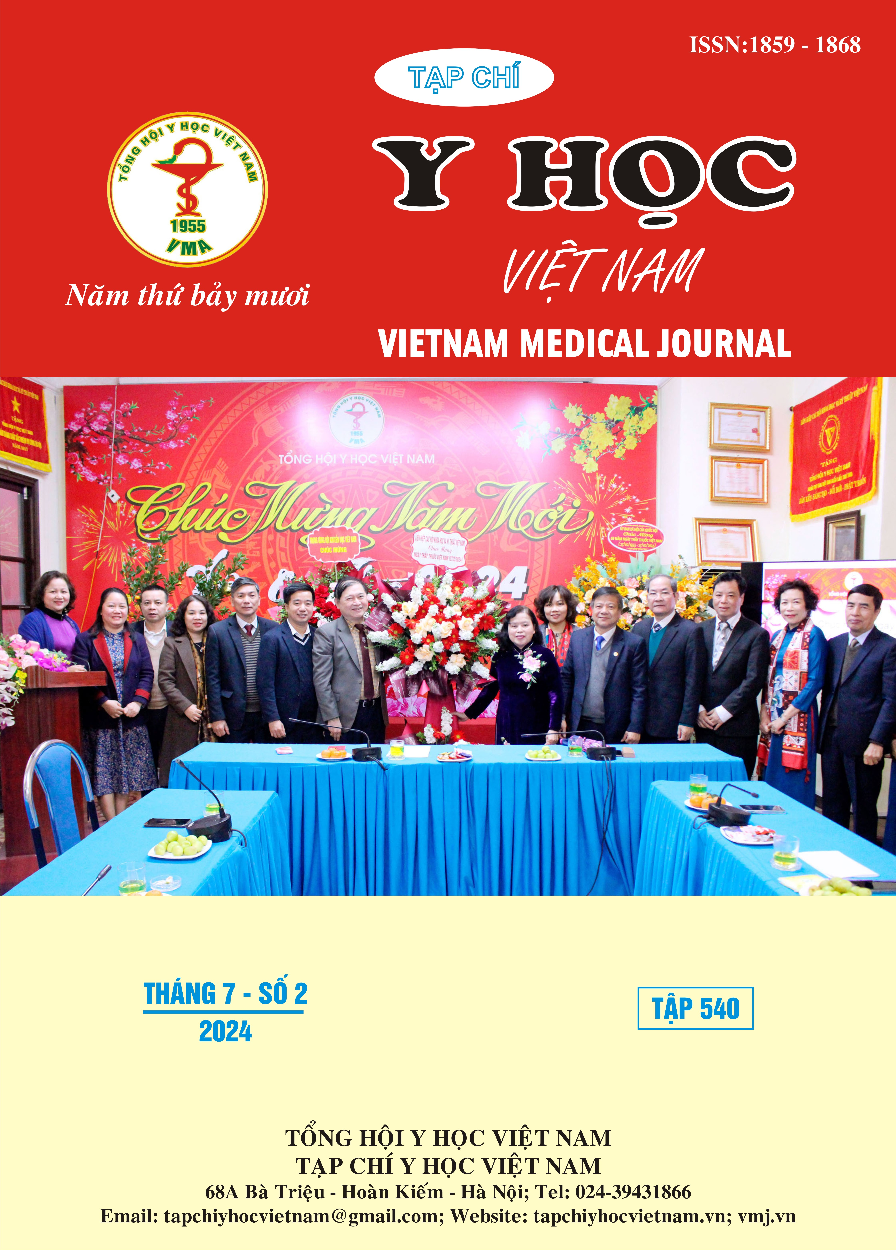CLINICAL AND SUBCLINICAL CHARACTERISTICS OF PATIENTS WITH PLEURAL EFFUSION AND SOME FACTORS RELATED TO MALIGNANT PLEURAL EFFUSION AT THAI NGUYEN LUNG HOSPITAL IN 2023
Main Article Content
Abstract
Objective: Describe the clinical and paraclinical characteristics of patients with pleural effusion and identify some factors related to malignant pleural effusion. Methods: Descriptive study, total sample size, obtained 179 pleural effusion patients treated at Thai Nguyen Lung Hospital, from June 2022 to June 2023. Patients were divided into 02 groups of malignant pleural effusion and non-malignant pleural effusion. Results and discussion: Pleural effusion occurred in 66.5% of men, 70.4% ≥50 years old, and 11.2% with a history of pleural effusion. Symptoms of pleuritic chest pain were 86.0%, triple reduction syndrome was 82.1%, and dyspnea was 67.6%. The volume of fluid was average 45.3%, one side 89.4%, yellowish lemon fluid color 72.1%. Cell Block to diagnose malignant pleural effusion accounts for 17.9%. The cause is lung cancer 62.5%. Adenocarcinoma 78.3%. Factors closely related to malignant pleural effusion are: rapid recovery of effusion, weight loss, fluid quantity and fluid color with p<0.01. Conclusion: Most people experience unilateral pleural effusion, exudate, and yellowish lemon fluid color. The rate of malignant pleural effusion is 17.9%, mainly due to metastatic adenocarcinoma from the lung. Some factors related to malignant pleural effusion include being ≥50 years old, having a history of pleural effusion, weight loss, rapid fluid recovery, large amounts of fluid, and fluid that is often red or pink in color. Cellblock should be prescribed in the setting of pleural effusion.
Article Details
Keywords
Pleural effusion, malignant pleural effusion, Cell Block, Lung hospital.
References
2. Vũ Đỗ (2023). Nghiên cứu kết quả nội soi lồng ngực chẩn đoán nguyên nhân và điều trị tràn dịch màng phổi. Luận án Tiến sỹ y học, Trường Đại học Y Dược Hải Phòng.
3. Lê Thành Đạt và CS (2023). Đặc điểm dịch tễ và cận lâm sàng ở bệnh nhân tràn dịch màng phổi ác tính tại bệnh viện Phạm Ngọc Thạch. Tạp chí y học Việt Nam, tập 531, số 2 (2023), tr. 46-49.
4. Trần Thanh Hùng và CS (2019). Đánh giá kết quả sinh thiết màng phổi ở bệnh nhân tràn dịch màng phổi dịch tiết tại Bệnh viện Lao và Bệnh Phổi Cần Thơ năm 2018. Tập chí Y học Cần Thơ số 22-23-24-25/2019.
5. Lê Hoàn và CS (2016). Nghiên cứu đặc điểm lâm sàng, cận lâm sàng và nguyên nhân của tràn dịch màng phổi ác tính. Tạp chí Y học lâm sàng, số 96, tr. 82-87.
6. Nguyễn Duy Hoàng và CS (2022). Khảo sát nguyên nhân tràn dịch màng phổi ác tính được chẩn đoán bằng kỹ thuật khối tế bào tại bệnh viện Trung ương Quân đội 108, Tạp chí y học Việt Nam, tập 521 số đặc biệt (2022), Hội thảo khoa học giải phẫu bệnh – tế bào bệnh học Việt Nam lần thứ 10, tr. 58-64.
7. Gonnelli F, et al (2024). Malignant pleural effusion: current understanding and therapeutic approach.


